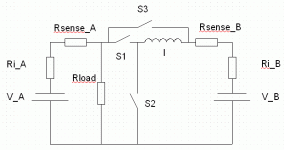bearing said:swbluto said:And, the ping's and a123s are definitely of different chemistries. Same foundations, but they definitely have different chemical make-ups. Once you mastered mixing those, then mixing others chemistries would be a cake-walk like extension.
Hm, I'm not sure about that. Both are LiFePO4. What's your source?
Their discharge curves are almost identical.
http://endless-sphere.com/forums/viewtopic.php?f=14&t=5362&p=102163&hilit=Ping+2.0+Reports+discharge+curve#p102163
http://www.zeva.com.au/tech/LiFePO4/images/A123-discharge-1.0ohm.jpg
Well... I can say the anode is different from GGoodrum's observation that a high floating voltage is maintained on the undamaged a123s whereas that's not true for others. Also, the a123s lithium crystals are smaller although that's not fundamentally different other than a higher total amount of molecular surface area per amount of lithium(Which means greater current). Also, the a123s seem to be a lot more steep and sudden near their cutoff than the ping's for the same current comparisons... but for "comparable currents" adjusted to their internal resistance, they might be exceptionally similar... They're foundationally the same, as I stated, but their chemical make-ups would be different since they do exhibit some of these different properties.
But, even if they're "oh so equivalent", I think most of the same principles could extend to mixing other different chemistries so it's relevant. Also add in the fact I have a ping and I want some a123s for the performance boost, but not too much due to the expense, and it's especially relevant.
bearing said:swbluto said:You want to limit the charging current to prevent over-charging current of the a123s and also the excess current supplied by the pings. This is partially what the circuitry is for.
Since they both have a voltage of 3 - 3.2 V over 90% of their capacity range I don't think a charge current limiter is necessary. 0.2V / 0.030 ohm = 7A which is okay with the A123:s.
So getting rid of the charge limiter might be practical(Although you're going to have to have something to bypass the schotskies). I guess that depends. But what if you get close to the Ping's cut-off current with the additional load of recharging the a123s? Once you start getting close, I can imagine you'll want to start limiting the charging current to minimize/reduce stress on the Ping. But for practical purposes, it's possible but I can imagine that could stress the Ping battery so it's definitely worth testing.
Anyways, I'm going to run some circuit simulations soon to get a general idea of what would work and what wouldn't. I'll probably be running these simulations on Wednesday or Friday evening as I've some midterms coming Friday. If someone less busy than I would like to do similar, go right ahead.


